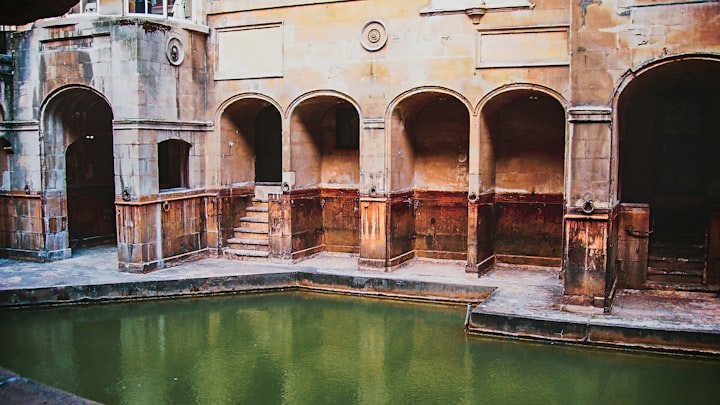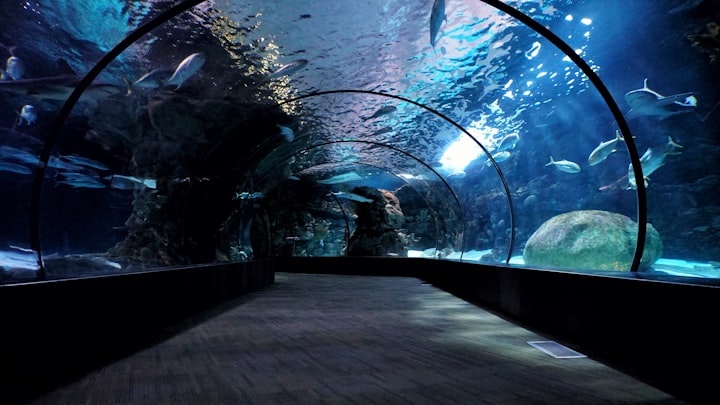For the Love of Hot Tubs
On hot tubs, their origins, and why we love them so much
I love hot tubs. Like, a lot. Absurdly much. I live in near-constant craving of hot bubbly water. When I'm searching for an Airbnb, I check the box next to "hot tub" under the amenities category, on the off chance that my location will have one. When booking a hotel, I check the pictures to see if they have a pool and spa. I'll live if my travel plans don't involve a hot tub, but it's always infinitely better when they do.
I have been pretty lucky in my hot tub quest this summer. While visiting Montana for a friend's wedding in July, another friend and I stayed at a gorgeous little guesthouse with a three-person hot tub on a private patio. In the afternoons, between festivities, I would slip into the dreamy bubbly goodness and stare up at the wide-open sky in absolute bliss.
After the wedding, my friend and I traveled through Grand Teton and Yellowstone National Parks. We weren't expecting our hotel in West Yellowstone to have a hot tub, but we were pleasantly surprised when it did. It was a great one at that: clean, with perfectly hot water and color-changing lights beneath the bubbles.

Finally, last week while on a trip to the New River Gorge in West Virginia, my family and I managed to find a hotel with not one but two hot tubs–although one of them was more like a hot bucket, since the jets didn't work. Still counts.
Between all of these soaks and my visits to the numerous hot springs of Yellowstone, I started to wonder about the allure of hot water. What is it about hot tubs that draws me so much? Why are humans so attracted to pools of steaming water? How did hot tubs become a thing, and why do we love them so much?
Properly curious, I began to research.
The Origin of the Hot Tub
Hot tubs, like many human inventions, are an approximation of a natural phenomenon. Hot springs, like those I saw in Yellowstone this summer, are the original version–nature's hot tub, if you will.
Hot springs are geothermal features that can occur in both volcanic and non-volcanic areas, according to the National Park Service. Although the formation of hot springs differs depending on the location and type of geothermal activity, generally, hot springs form when water seeps deeper into the earth's surface, coming into contact with heated rocks, and then is pushed back to the surface.

Many ancient cultures venerated hot springs. One of the most prominent types of hot spring is the onsen in Japan. Since Japan is one of the most volcanic countries on Earth, there are numerous naturally occurring hot springs throughout the archipelago. Sources disagree on when onsen were first used by humans, but their use and prominence in Japanese culture dates back to at least the first century.
The Romans were also big fans of hot springs in particular and bathing in general. Famous for their aqueducts, they pumped hot water into large bath houses, called thermae, which became popular centers for relaxing and socializing.

One of the unfortunate downsides of the spread of Christianity was that, in contrast to the Romans' affection for cleanliness, Christians in the Middle Ages apparently did not bathe as frequently. There is conflicting information for the reasons for this behavior. It seems as though Roman bath houses were viewed as immoral or salacious places, so they were not adopted by Christians. Thus, the use of thermal hot springs declined in Europe in this era, and did not resurface (pun intended) again until the 1800s, when doctors became increasingly likelier to prescribe immersion in certain hot springs for all sorts of medical ailments.
It's not clear exactly when we made the switch from hot springs to hot tubs. But one name in the story may be familiar: Jacuzzi.
I was today years old when I learned that Jacuzzi is not just a proprietary name for a hot tub; it was actually the surname of a family of Italian immigrants who came to California in the 1900s.
In 1956, when one of their family members developed rheumatoid arthritis, the Jacuzzi brothers invented the J-300, a submersible pump that could be placed in a bathtub to create a fizzy, bubbly spa. Later, in 1968, Roy Jacuzzi invented the world's first official hot tub. In reference to the ancient tradition of hot water baths, he called it "the Roman." It included built-in jets that circulated a whirlpool of air and water at a 50-50 ratio.
Here's Roy Jacuzzi discussing his invention in an interview:
What are the Health Benefits of Hot Springs and Hot Tubs?
The Japanese, the Romans, and the Jacuzzi brothers clearly found the idea of a bubbly pool of water to be a pleasant one. But how about the benefits? Are there any actual curative elements to hot springs and hot tubs?
Many people certainly seem to think so.
One of the major appeals of springs, particularly Japanese onsen, is the presence of certain minerals in the water, such as sulfur, iron, and magnesium. These minerals are believed by some to have certain positive health effects on the skin and immune system. Hot springs may also improve cardiovascular health, according to one 2018 study, and they have been linked to reduced blood pressure.

While hot tubs do not have the mineral content of naturally occurring hot springs, they apparently have some benefits as well.
The presence of jets puts hot tubs at an advantage over hot springs in some ways. Much like a foam roller or massaging ball, the steady pressure of the jets can soothe sore muscles. It was also found that a soak in a hot tub can sometimes help to relieve insomnia, thanks to the heating of the water.
The most obvious benefit of a hot spring or hot tub is stress relief. There is something so soothing in the combination of the heat, the jets, and, depending on your location, the calming setting.

Although a hot spring or hot tub probably won't cure diseases or radically alter your life, there are undeniable benefits to a nice soak. Just be sure to follow the CDC's guidelines for hot tub use: limit your time, make sure you're well before entering, stay hydrated, and give the tub a pass if you're pregnant or have a heart condition.
The Bottom Line
Considering the benefits and relaxation potential of hot springs and hot tubs, it's no wonder that we love these bubbly pools of steamy goodness so much. From the Japanese to the Romans, from the Jacuzzi family to the modern day, the hot tub has been a staple of human use for much of our recorded history.
So I'll keep searching for Airbnbs with hot tubs and being delighted when my hotel unexpectedly has one. I'll stay hydrated and savor the deep massage of a jet. I'll thank the mantle of the earth and the J-300 for these relaxing pools.
Because there is very little on Earth that I enjoy more than a good hot tub.
About the Creator
Sarahmarie Specht-Bird
A writer, teacher, traveler, and long-distance hiker in pursuit of a life that blends them all. Read trail dispatches and adventure stories at my website.







Comments
There are no comments for this story
Be the first to respond and start the conversation.